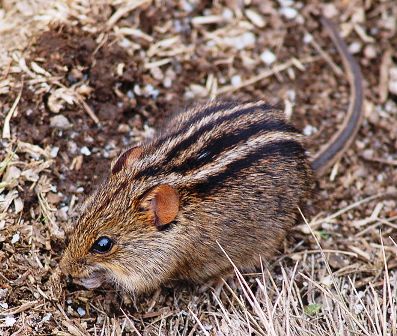1 Peter 5:6-7
6 Humble yourselves, then, under the mighty hand of Elohim, so that He exalts you in due time,
7 casting all your worry upon Him, for He is concerned about you.

YAHWEH’S CREATION OR RANDOM EVOLUTION
Most mice are nocturnal. The African four-striped grass mouse (Rhabdomys pumilio), however, operates in the fierce equatorial sun.
The African Four-striped Grass Mouse goes out in the hottest sun to eat roots, green grass, and seeds. It may do its shopping on the ground or climb a low branch to select food from a low shrub. The chipmunk-like mouse is found throughout eastern and southern Africa, where the sun is the strongest. Near the equator, the powerful sunlight also includes powerful doses of ultraviolet radiation.
The African Four-striped Grass Mouse is more equipped to handle this harsh environment than most other creatures. Beneath its fur, the mouse has melanin-pigmented skin. Melanin is the pigment that turns our skin brown when it’s exposed to the sun. Melanin protects the skin from sun damage, including ultraviolet radiation. The grass mouse also has an additional melanin-pigmented layer between its skull and its outer skin. This layer provides additional protection for the mouse’s brain. Only three other African rodents have this special protective helmet. White tent-making bats of South America have similar protection. While these bats sleep during the day, they sleep in a curled position that exposes their heads to the South American sun.
This special protection was obviously designed keeping in mind the danger of overexposure to ultraviolet radiation. Humans have only recently learned about these dangers. We can safely guess that the animal world doesn’t know about it at all. But our all-wise Creator does.
[You will find this and other similar articles at creationmoments.com]
Notes: Carter, Laura S. 1992. “Ban the Soleil.” Natural History, June, p. 76. Photo: Four-striped Grass Mouse. Courtesy of C.R.Selvakumar. (CC BY-SA 3.0) [Used by permission]